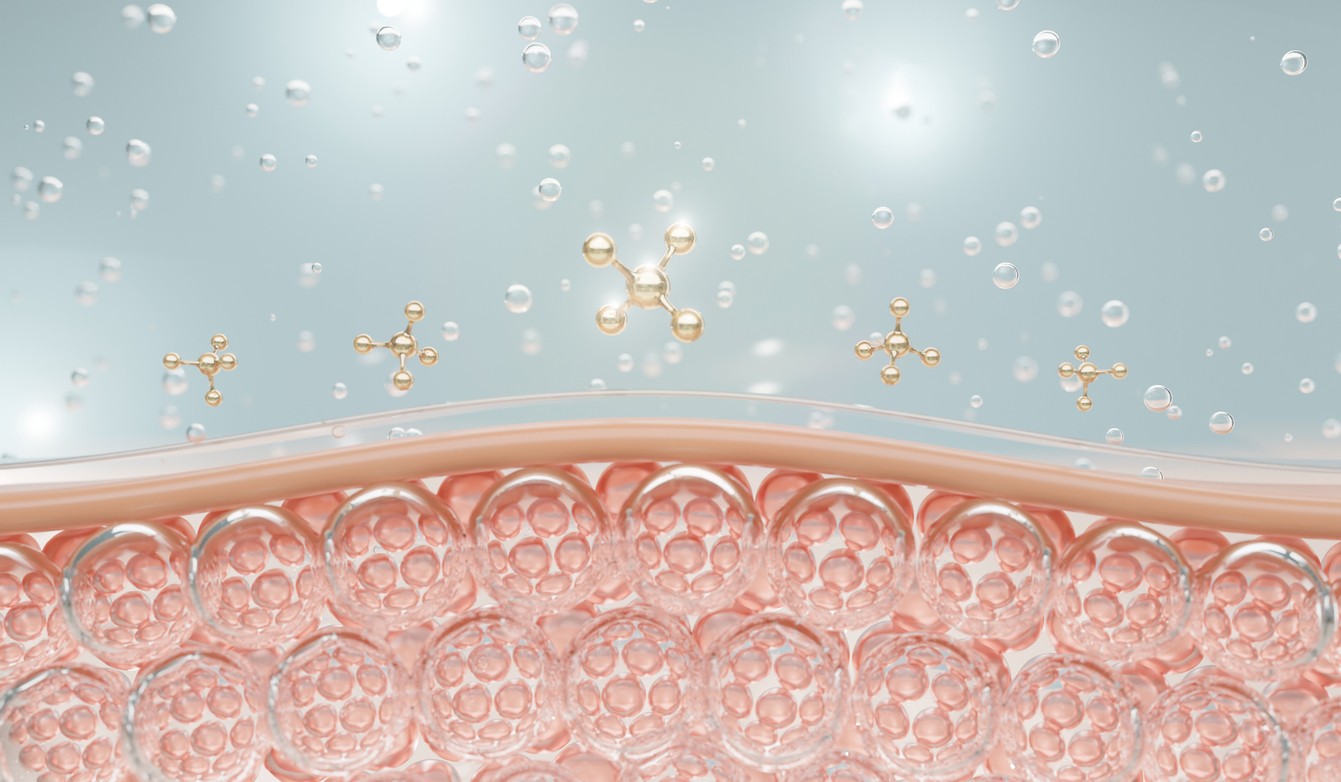SNAP-8 peptide, also known as Acetyl Glutamyl Heptapeptide-1, is a hexapeptide Argireline elongation. SNAP-8, like other hexapeptide-based peptides, may exert an anti-wrinkling action on the extracellular matrix of the skin (ECM).[1] The peptide may potentially prevent the disruption of the lipid matrix’s packing. SNAP-8 peptide is unique, as it appears to target the wrinkling mechanism in a novel and distinct manner.[2]
SNAP-8 Peptide Research
Muscle contraction occurs following the release of neurotransmitters from vesicles. The SNARE complex is considered to be required for muscle contraction because it appears to act as a cellular hook, capturing vesicles and fusing them with the membrane to allow neurotransmitters to be released. Wrinkling occurs when muscles contract repeatedly. SNAP-8 peptide destabilizes the SNARE complex’s functions, causing vesicles to stop producing neurotransmitters efficiently and reducing the appearance of lines and wrinkles.
SNAP-8 peptide may also inhibit catecholamine release, resulting in the reduction of existing wrinkling. Catecholamine inhibition may also affect the stabilization process in muscle contraction regulation by activating the Ca2+ ion. SNAP-8 peptide appears to induce endogenous collagen production and release which may strengthen the skin structure.[3] SNAP-8 peptide may act as a muscle contraction inhibitor, allowing muscles to achieve high homeostasis levels.[4] SNAP-8 peptide may potentially reduce the severity of wrinkles, in some studies citing reduction up to 63.13%. The peptide’s potency appears to be 30% higher than its parent peptide, Argireline.
Glutamate is a neurotransmitter that is considered to function to excite neurons. Study findings indicate that combining SNAP-8 with Leuphasyl may have a stronger inhibitory effect on glutamate than single peptides. Meanwhile, glutamate appears to stimulate muscle contraction, resulting in wrinkling. As a result of inhibiting glutamate release, wrinkles and fine lines may potentially be avoided.[5] Researchers conclude that the peptide works by “preventing neuromuscular signal propagation, thereby eliminating wrinkles caused by over-stimulated neurons.” Researchers performed a skin topography analysis to determine the efficacy of a 10% concentration of SNAP-8 solution, obtaining silicon imprints from the eye region. Data concluded that wrinkle depths decreased to different degrees following the study.
A similar experiment was performed with a 10% Argireline solution. The results suggested that the control group exhibited a -2.99% wrinkle reduction, Argireline exhibited a -27.05% reduction, and SNAP-8 peptide reported a -34.98% wrinkle reduction. Following these comparisons, 10% of SNAP-8 solutions appeared to have achieved a maximum wrinkle reduction of -63.13%.[6] Indeed, the scientists conclude that “According to the data available in the manufacturer’s website, maximum wrinkle reduction strives for−62%, with the mean value at the level of −35%.”
Disclaimer: The products mentioned are not intended for human or animal consumption. Research chemicals are intended solely for laboratory experimentation and/or in-vitro testing. Bodily introduction of any sort is strictly prohibited by law. All purchases are limited to licensed researchers and/or qualified professionals. All information shared in this article is for educational purposes only.
References
- Ji, Moongi, et al. “Method development for acetyl octapeptide-3 analysis by liquid chromatography-tandem mass spectrometry.” Journal of Analytical Science and Technology 11 (2020): 1-7.
- Backardzhiev, Ilko, and Dona Filcheva. “Peptides in dermatocosmetics.” Journal of Varna Medical College 4.1 (2022): 45-49.
- Avcil, Muhammet, et al. “Efficacy of bioactive peptides loaded on hyaluronic acid microneedle patches: A monocentric clinical study.” Journal of Cosmetic Dermatology 19.2 (2020): 328-337.
- Raposio, Edoardo, et al. “EVALUATION OF EFFECTIVENESS OF VIPER SERUM FOR USE AS FACIAL ANTI-AGING.” (2009).
- Gutierrez, Luis M., et al. “A peptide that mimics the C-terminal sequence of SNAP-25 inhibits secretory vesicle docking in chromaffin cells.” Journal of Biological Chemistry 272.5 (1997): 2634-2639.
- Errante F, Ledwoń P, Latajka R, Rovero P, Papini AM. Cosmeceutical Peptides in the Framework of Sustainable Wellness Economy. Front Chem. 2020;8:572923. Published 2020 Oct 30. doi:10.3389/fchem.2020.572923.






